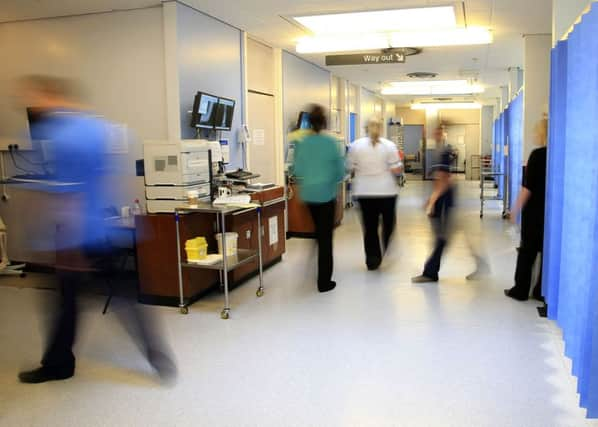Record levels of patients attending A&E


Nationally the number of visits to A&E in England reached its second highest monthly level and topped two million for only the third time since records began in 2010.
Attendances at A&E at Leeds General Infirmary and St James’s are up 8.4 per cent so far this year, putting “extreme pressure” on both hospitals.
Advertisement
Hide AdAdvertisement
Hide AdHull Royal Infirmary said the number of visits to A&E was up 20 per cent this July compared to last - with 446 patients attending in a single day setting a new department record.
It comes as the number of days lost through so-called “bed blocking” in England reached its highest monthly level on record.
Patients taking up beds when they no longer required hospital care took up 184,188 days in July compared to the 147,376 days in the same period last year, according to official data, sparking warnings that the NHS “would remain in a state of constant winter” unless funding issues were addressed.
A spokesman for Leeds Teaching Hospitals NHS Trust said: “We’ve had the highest level of attendance ever this year, and corresponding admissions. To September 1 there has been an increase in attendance of 8.4 per cent; since April 1 to date 6.4 per cent. Traditionally we would expect demand to level out over the summer and allow us to recover our position, but for the last couple of years demand has just risen in this unprecedented way. It is placing our staff and the services we run under extreme pressure.”
Advertisement
Hide AdAdvertisement
Hide AdChief executive of Hull and East Yorkshire Hospitals NHS Trust Chris Long said staff had “coped admirably.”
Despite the 20 per cent rise in attendances, they were on track to seeing 90 per cent of patients attending A&E within the four-hour waiting times target.
Bed blocking is when someone is medically fit to be discharged, but care has not been organised to help them outside of hospital.
More than half (59.1 per cent) of all delays in July were attributable to the NHS, while the social care sector was responsible for 33.1 per cent of delays. Both were responsible for 7.8 per cent.
Advertisement
Hide AdAdvertisement
Hide AdThe main reason for delays caused by the social care sector was that patients were awaiting care in their own home. Almost a third (29 per cent) of NHS delays were caused by patients waiting for non-urgent NHS care.
Clare Marx, president of the Royal College of Surgeons, said bed capacity was a “major concern” and warned that the NHS would “remain in a state of constant winter” unless funding issues were addressed.
“Patients’ treatment is too often delayed because there is no space on wards for them after their operations,” she said. “Unless the NHS and social care does more to help patients leave hospital sooner and the elective bed capacity increases, I fear we will not see waiting times improve.”
NHS England said the figures showed the pressures facing the health service and warned of the “obvious risks” of further industrial action, as junior doctors prepare to stage week-long walkouts in October, November and December over a new contract. Unlike their counterparts, Sheffield Teaching Hospital NHS Foundation Trust said they had 288 less attendances comparing July 2016 to July 2015, 2.7 per cent down.